Hokkaido Day 3 - Hell Valley and Heavenly Ramen
| Travel Reports by Aaron Chong | view profile of Aaron Chong |
| previous post |
| next post |
| Note: The opinions and views expressed in this user report are those of the individual author and do not necessarily reflect the opinions and views of japan-guide.com. |
July 4, 2016 - Hokkaido Day 3 - Hell Valley and Heavenly Ramen

My second day in Sapporo has come and once again the weather was just as gorgeous as the day before. In order to make good use of the Hokkaido Pass, I've decided to go for a day trip to Noboribetsu. Like Otaru, this is another of those tourist attractions frequently visited by foreigners, due to its close proximity from Sapporo. I really look forward to the forest treks and soaking in the hot springs, especially after a tiring day touring Yoichi and Otaru the day before.
From Sapporo station I took the earliest Suzuran Limited Express at 7.30am bound for Noboribetsu.
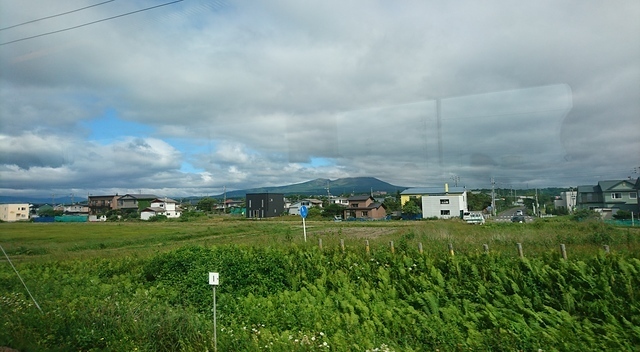
After an hour, I've finally reached Noboribetsu station and in the station I picked up a map and a bus timetable. It is from here that I have to wait for another 10 minutes for a bus bound for the Noboribetsu Onsen hot springs town. I can't remember exactly how much was the one way fare (about 300 yen), but when I got into the bus and studied the bus timetable, I noticed some text at the bottom of the paper, stating that a return ticket between Noboribetsu station and the hot springs town can be bought from the station's ticket counter at a cheaper price.

After about 30 minutes passing by the cheesy-sounding Datemura amusement village and some scenic views along the elevated section of the mountain road above the forest, I've finally arrived at the bus terminal of Noboribetsu Onsen. As I got off the bus, I was immediately greeted by the familiar overbearing rotten-egg stench of sulfur lingering in the air.
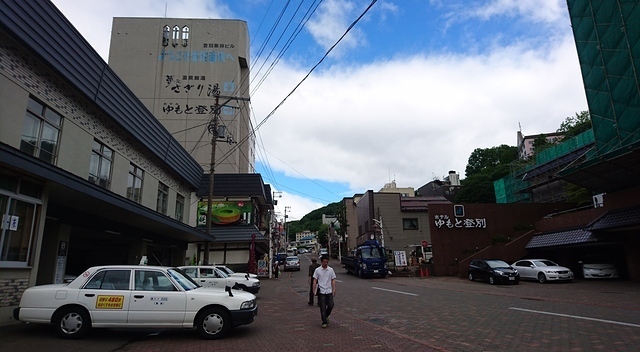
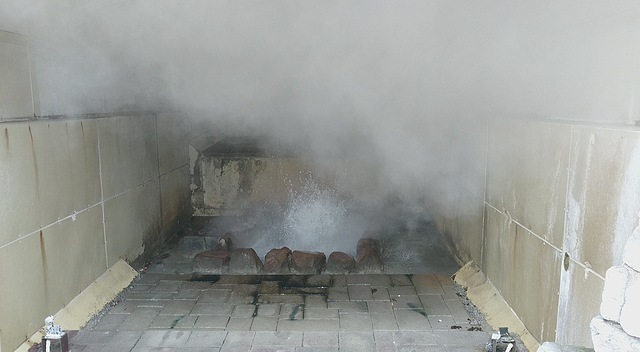
After checking out a bit of the town, it is time to head to Noboribetsu's famous attraction, the Noboribetsu Jigokudani (Hell Valley). The scenery around the hell valley was indeed breathtaking and spectacular especially in such wonderful weather.

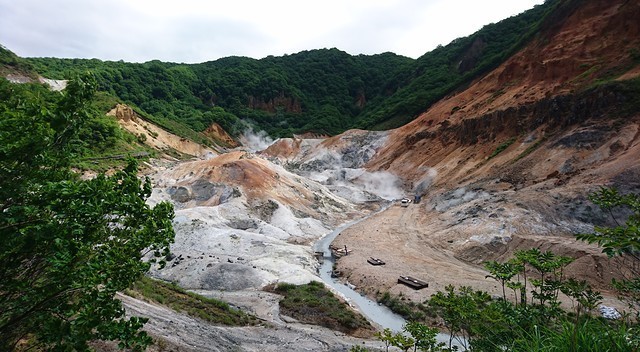
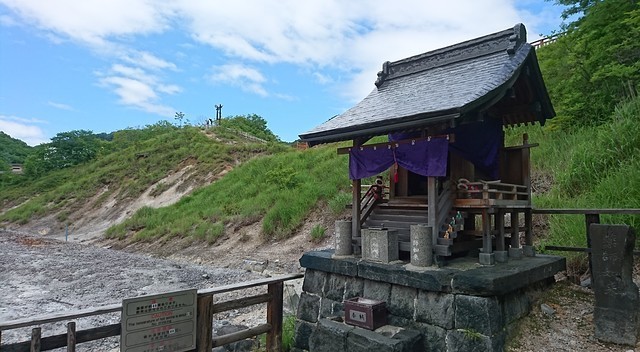
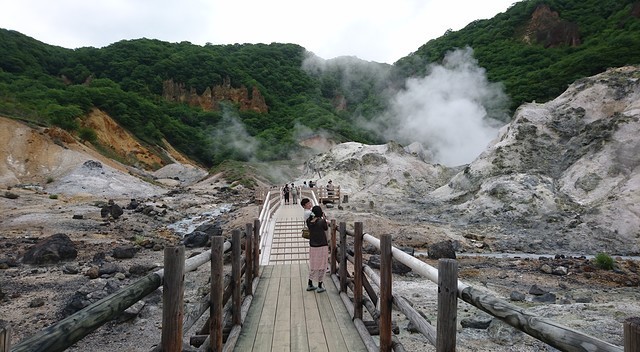
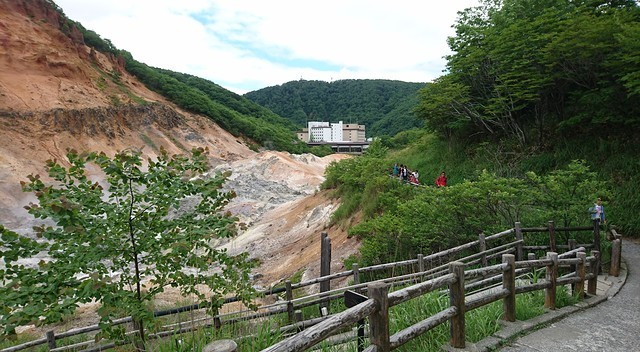
After finished my tour around Jigokudani, I continued my trek through the forest toward Oku no Yu (inner boiling spring) and Oyunuma (boiling swamp). Despite the hilly terrain, the trek was pleasant and not too strenuous. Coupled with the nice cool weather, it was such a treat to start the day early like this.
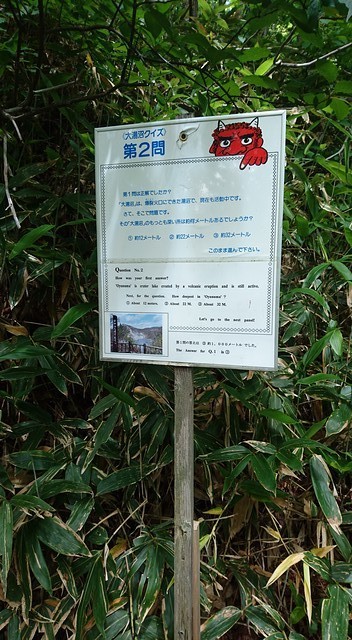
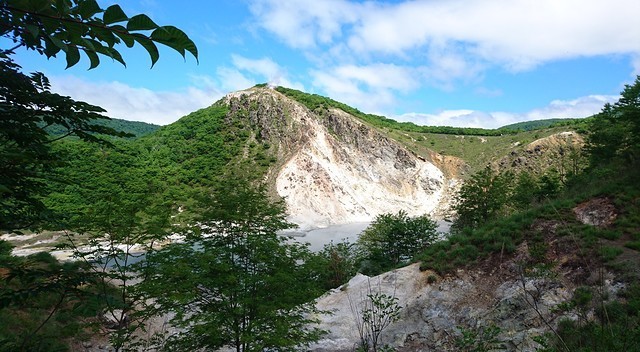

From Oyunuma, I followed the paved road and turned into another forest trail that hugs a stream fed by the boiling hot waters of the swamp, known as Oyunumagawa or Oyunuma River. In this section of the trek, I stopped by at a pond known as Taisho Jigoku (Taisho Hell) that changes color at different times of the day. The main attraction of this section however is the free hot springs foot bath along the riverbank, a perfect place to relax tired, worn out feet.
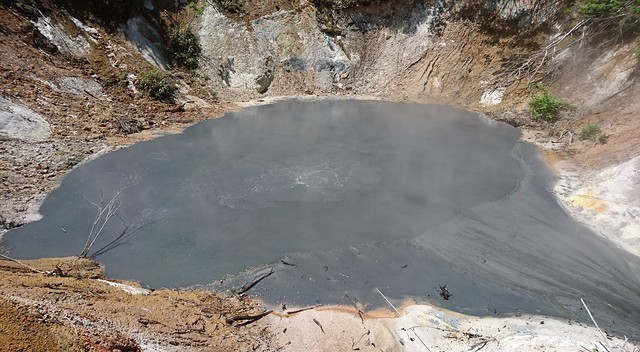
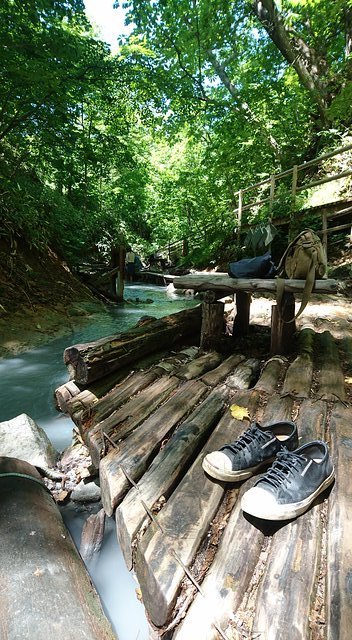
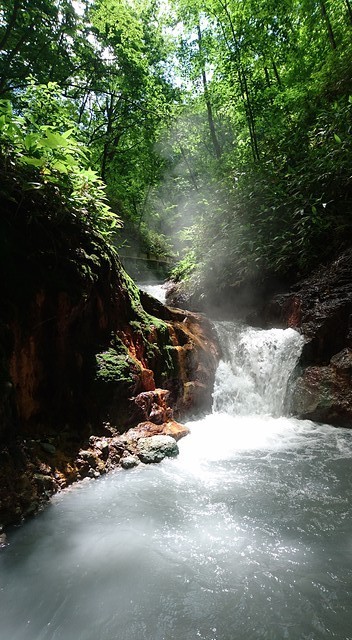
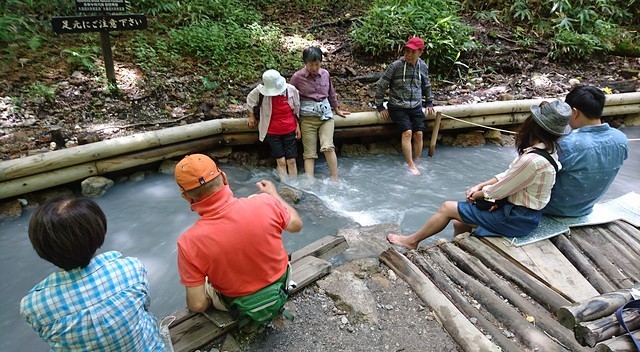
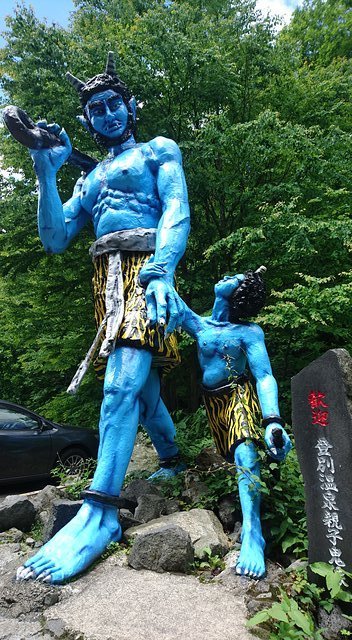
After completing the trek around Noboribetsu, it was time for some soaking in one of the several hotels and ryokans dotting the Jigokudani area.
My choice for the day was Daiichi Takimotokan, well known for its baths fed by various types of hot spring water and with perfect views of Jigokudani. Instead of paying the bathing fee of 2000 yen, I paid 2500 yen to get a 1000 yen lunch voucher at any restaurant within the hotel to go along with the wonderful bathing experience. This lunch package is only available during lunchtime outside holiday seasons and is worth considering.
Unfortunately, photography is not allowed in the baths or else I would've posted some nice pictures of the rotemburo (outdoor baths) with Jigokudani in the background. I forgot to bring my swimming trunks or else I would've made full use of the pool facilities included as part of the bathing package.
For lunch, I decided to have tempura and, as greedy as always, I went for the most expensive item, the 2000 yen Okanabo Tendon, a dish with towering jumbo prawns shaped like the big clubs wielded by the demons. With the 1000 yen lunch coupon, I only had to pay the remaining 1000 yen and 8% tax.
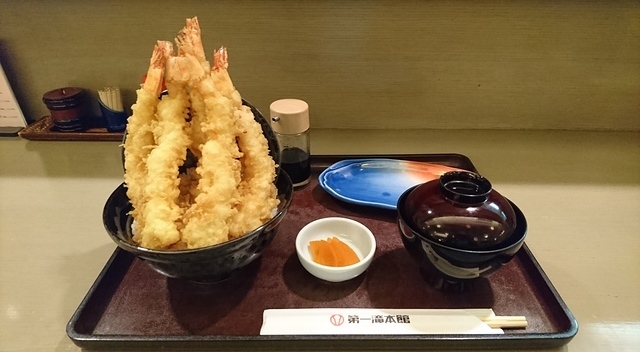
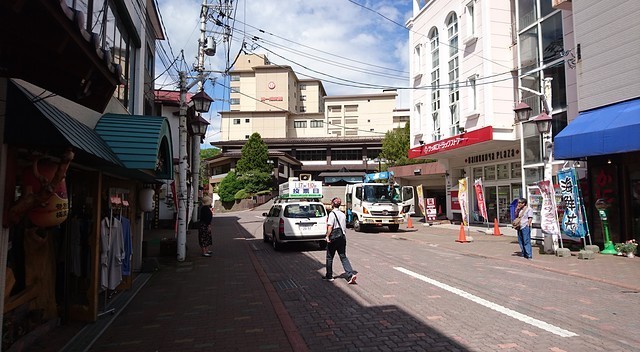
After lunch, I quickly headed to the bus terminal to catch the next bus back to Noboribetsu Station, thinking that I had time to visit the Ainu Village Porotokokan at Shiraoi. At the station, only Super Hokuto trains were available during the hour and none of them would stop at Shiraoi. I also mulled going to Lake Toya but after consulting with the staff at the station I learned that a trip to Lake Toya was close to impossible at such timing.
Since I wanted to buy a new hat for the treks at Shiretoko and Rebun Island, I decided to go back to Sapporo for one last look of the city before leaving for Shiretoko tomorrow. With the power of the Hokkaido Pass, I booked a reserved seat on the Sapporo-bound Super Hokuto, free of charge.
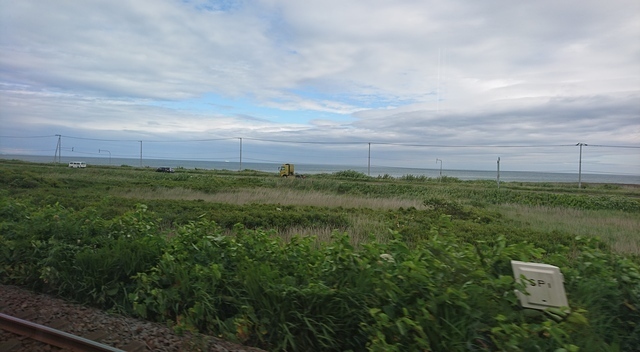
While heading toward Tomakomai, the train unexpectedly slowed down gradually to a halt in the middle of nowhere. An announcement was made and I heard that the train collided with a deer in the middle of the track and had to stop to make sure the train was all right before continuing its journey! This incident caused the train to be 15 minutes late when it arrived at Sapporo. I thought that Japanese trains are supposed to be punctual most of the time but not in Hokkaido.
I remembered vaguely a well-known shopping mall in Sapporo converted from old brick warehouses but I couldn't recall the name. At Sapporo station, I used the free Wifi service to access japan-guide.com to search for the place and found out that the shopping mall was called the 'Sapporo Factory'. And off I went as I took the subway to Bus Center Mae station to make my way there for some much needed retail therapy.
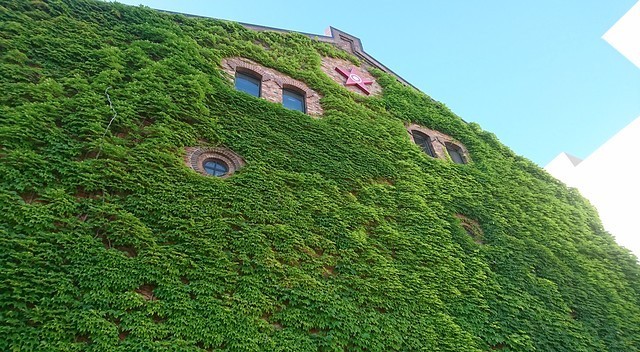
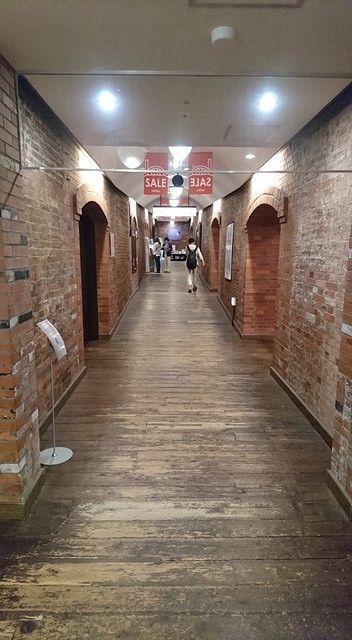


At the Sapporo Factory, I ended up buying a Goretex sunhat with a 50% discount from a large factory outlet store specializing in outdoor equipment.
From here on, it was time to go check out one of Sapporo's highly ranked ramen (ranked 2nd in tabelog.com). Since there was some time, instead of taking the subway back to Sapporo station from Bus Center Mae, I walked all the way to Odori Park to check out Sapporo TV Tower, even though I wasn't interested in it in the first place.
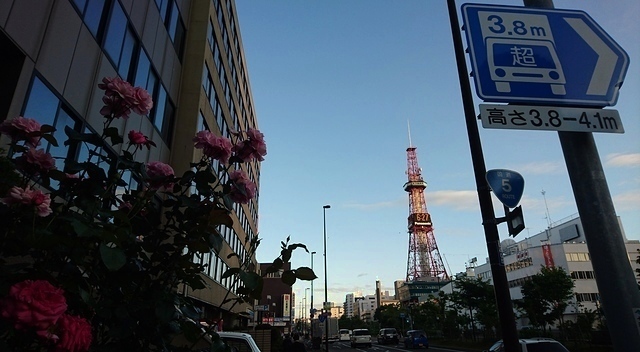
Having spent some considerable time trying to take that perfect picture of Sapporo TV Tower, I forewent the Sapporo Clock Tower and took the subway from Odori back to Sapporo station. From there, I took the JR and ventured into Sapporo's suburbs in search of that seriously good ramen.
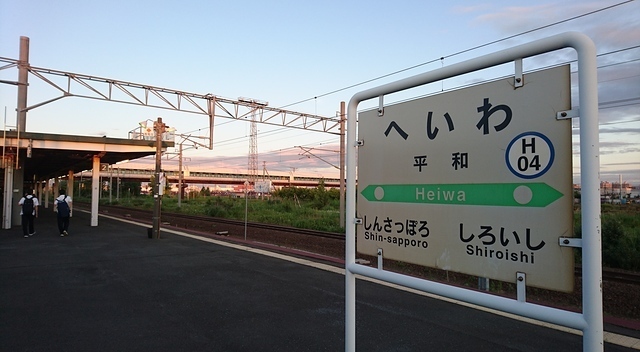
After 10 minutes walking from Heiwa station, I arrived at the critically acclaimed Menya Nanabe 麺屋菜々兵衛, famous for its toripaitan (chicken white soup) shio ramen. Judging from the number of cars and bicycles parked around the small corner shop, I knew I had come to a pretty good place. Even though the shop looked tiny from the outside, there were plenty of counter and zabuton seats inside.
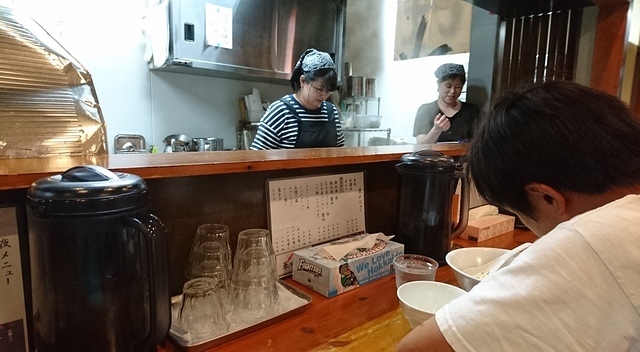
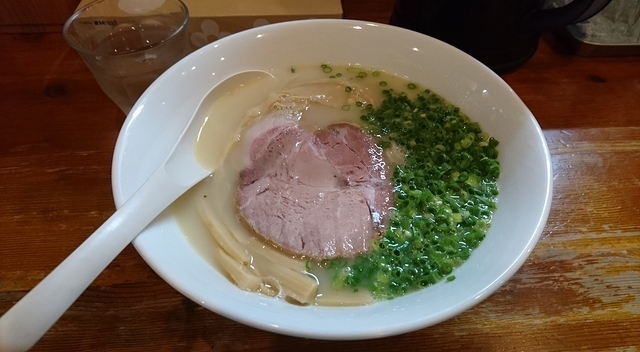

While writing this post, my mouth kept salivating as I couldn't stop thinking of how insanely delicious Nanabe's ramen was. The soup was light but richly flavored with the goodness of chicken. This was definitely the best ramen I ever had in Japan and has beaten my previous all-time favorite of Enji in Ikebukuro.
The ramen was so good that upon hearing someone else ordering a mini chahan (fried rice), I also wanted to try one myself. Right in front of me, flames leaped from the wok as the cook prepared my fried rice with plenty of wok-hei. In no more than 3 minutes my fried rice arrived. One bite of the piping hot fried rice and it had exceeded my expectations. I can attest that not many places in KL have fried rice as wonderful as the one in Nanabe.
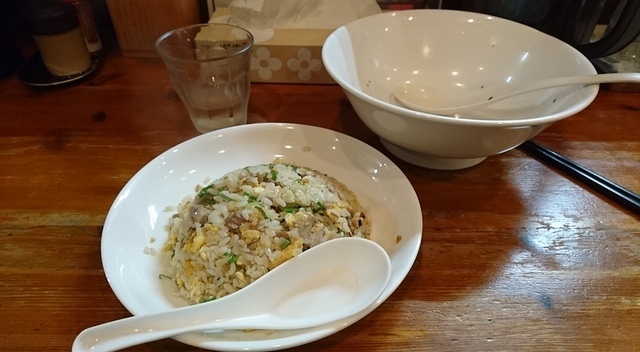
This marked my last night in Sapporo and I was so glad to start it well at Noboribetsu and finish it with a bang at Menya Nanabe. If I ever come back to Nanabe, I would definitely want to try their Nagoya Cochin Ramen. Unfortunately I didn't have more time to try more ramen, especially tabelog.com's number one Saimi 彩味, but I thoroughly satisfied with Ichigen and more so with Nanabe.
More pictures of this trip can be found at https://www.flickr.com/photos/124829205@N08/albums/72157671178053795
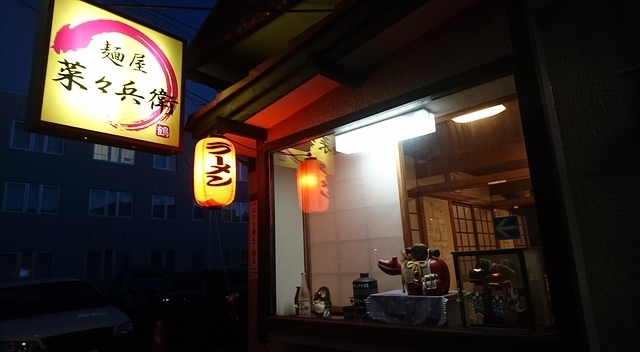
| previous post |
| next post |
